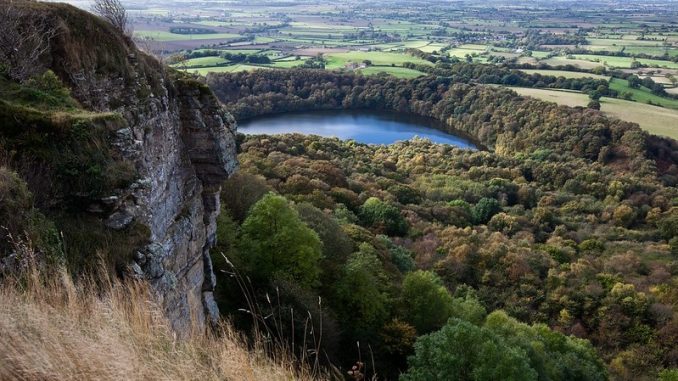
The occasionally bloody history of Sutton Bank is to be explored as part of a new project that will bring together community research, archaeological excavations and an array of public events and volunteering opportunities.
Famously described as the ‘finest view in England’, thousands of visitors to Sutton Bank National Park Centre enjoy its panoramic position each year.
However, many are unaware of the area’s historic significance, or the ancient landscape in which the centre sits.
Now, thanks to a grant of more than £280k from National Grid’s Landscape Enhancement Initiative, a three-year project entitled ‘Raiding the Bank’ will investigate the standout moments in history of this iconic landmark and the surrounding area.
“The sheer number of heritage sites within a small area is quite unusual,” said Steve Collison, who has recently been appointed as Raiding the Bank Project Officer at the North York Moors National Park Authority.
“From the Iron Age Hillfort at Roulston Scar, dating from around 400BC, to the dummy airfield of the Second World War, our timeline stretches back across history.
“We also have the Norman Motte that was located on the prominent Hood Hill, and then in October 1322, what is likely the bloodiest date of all, the Battle of Byland.”
In 2022, a flurry of events took place to mark the 700th anniversary of the Battle of Byland, a significant encounter fought during the Scottish Wars of Independence.
This piqued interest in the area’s history and whether any physical evidence could be found to help tell its fascinating story.
“With the help of volunteers and community members, we’ll be carrying out archeological fieldwalking, geophysical surveys, and small targeted excavations” continued Steve.
“We’re also delving into local archives, particularly those relating to the fascinating past of the Yorkshire Gliding Club.”
During the 1930s, many German glider pilots travelled to Sutton Bank for training, meaning that when war broke out, there was concern this familiarity would lead to it being a target for Nazi invasion. Defensive features, including trenches were therefore built, and a dummy aerodrome containing fake planes was constructed just to the north, designed to divert bombing from genuine airfields.
The National Park Authority will work closely with Yorkshire Gliding Club and Forestry England during the project, along with Historic England and The Battlefields Trust.
Alongside the archaeological investigations, the project will see accessibility improvements around Sutton Bank National Park Centre, opening up the area to more people with additional requirements. Work will also be carried out on the paths at Hood Hill Motte.
As the project sits in what is an important area for wildlife and biodiversity, two ponds will be built to benefit a multitude of species, including the threatened turtle dove.


Be the first to comment